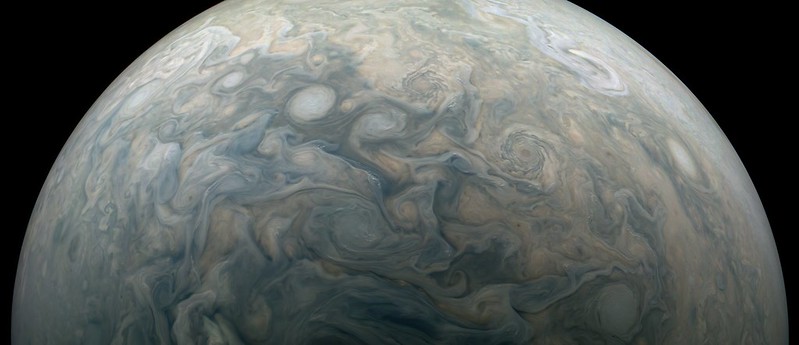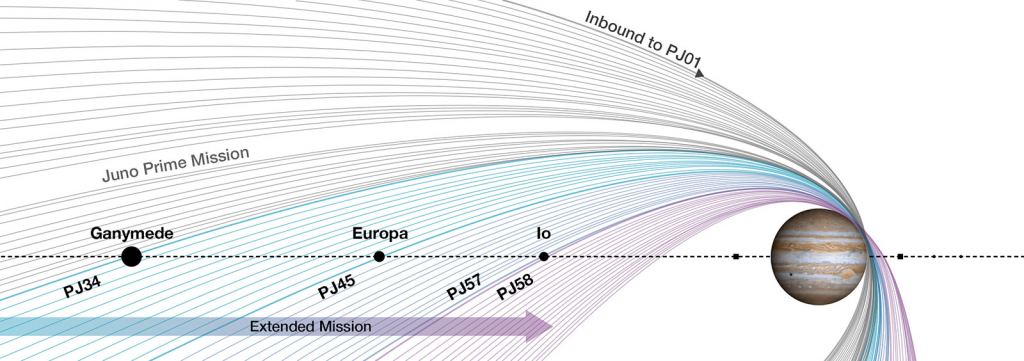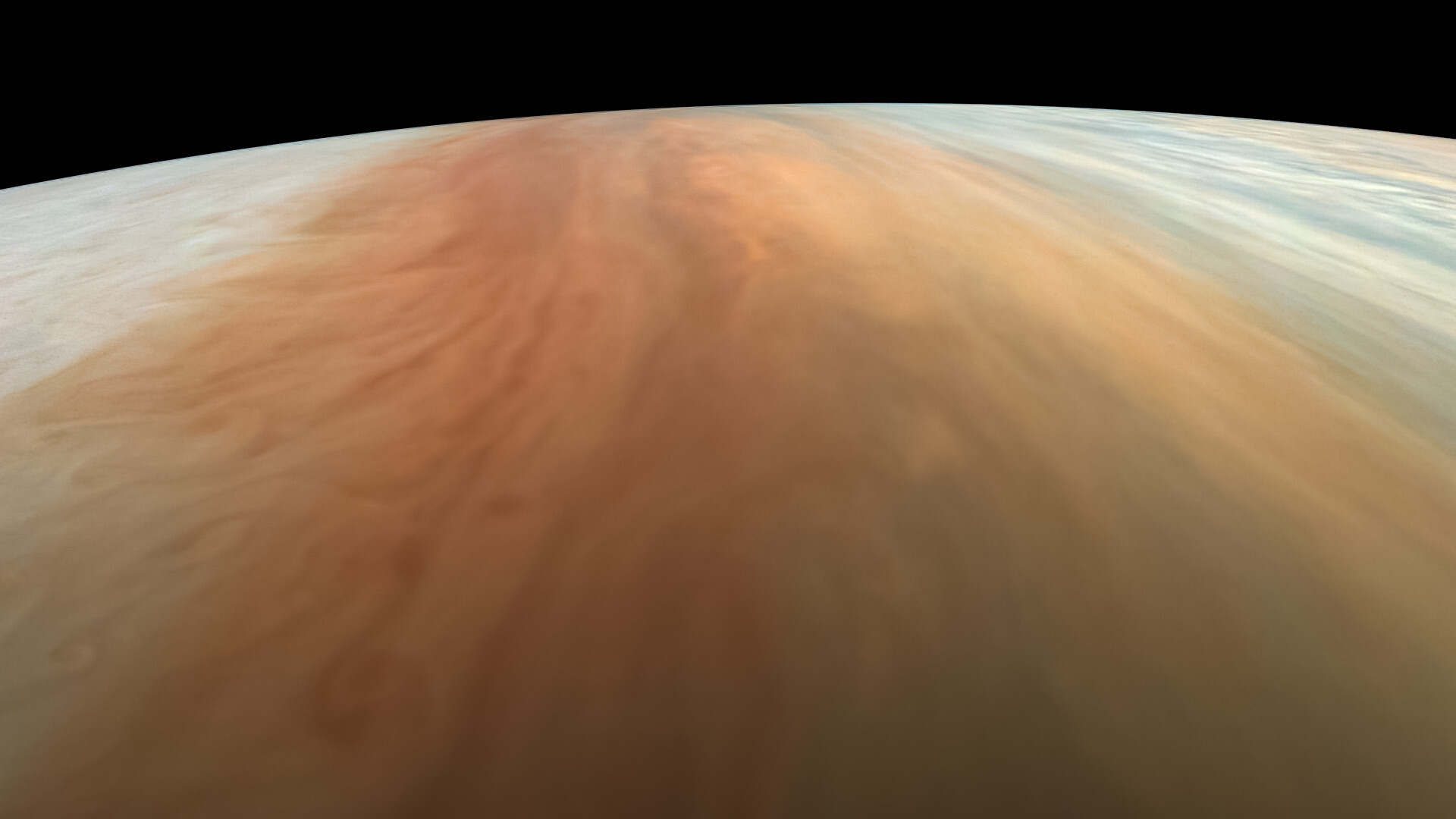During Juno’s extended mission, every orbit is like a new adventure. Each orbit is a little different, and NASA says the natural evolution of Juno’s orbit around Jupiter provides a wealth of new science opportunities.
But for most of us, what we look forward to on every perijove – the point in each orbit where the Juno spacecraft comes closest to the gas giant – are the incredible images taken by the camera on board, JunoCam. As Juno’s “eyes,” the camera provides a unique vantage point no other spacecraft has been able to give us.
Some of the latest images from Juno’s 36th close pass – Perijove 36 – give us a closeup view of skimming over Jupiter’s cloud tops. When the spacecraft comes close to the planet, Jupiter’s powerful gravity accelerates the spacecraft to tremendous speeda – about 200,000 kilometers per hour (~130,000 mph), relative to the planet.
Citizen scientists are the ones who do all the image processing for Junocam, and one of our favorite image wizards, Kevin Gill, doesn’t disappoint with these latest views of from the solar-powered spacecraft zooming over Jupiter’s swirling atmosphere, collecting data from a unique vantage point no other spacecraft has enjoyed. While Juno was actually 5,361.5 kilometers above the clouds at the time of image, Kevin lowered the camera perspective artificially to an equivalent of ~3,000 km.
We also love this incredible view, processed by Andrea Luck:
NASA says the design of the extended mission takes advantage of incorporating flybys of Jupiter’s Galilean moons. . Those flybys change Juno’s course when it comes back around Jupiter, resulting in a continued northward migration over the planet, sharpening its view of the multiple cyclones encircling the north pole.

NASA says the design of the extended mission takes advantage of incorporating flybys of Jupiter’s Galilean moon flybys. Those flybys change Juno’s course when it comes back around Jupiter, resulting in a continued northward migration over the planet, sharpening its view of the multiple cyclones encircling the north pole.
“The mission designers have done an amazing job crafting an extended mission that conserves the mission’s single most valuable onboard resource – fuel,” said Ed Hirst, the Juno project manager at JPL. “Gravity assists from multiple satellite flybys steer our spacecraft through the Jovian system while providing a wealth of science opportunities.” The satellite flybys also reduce Juno’s orbital period, which increases the total number of science orbits that can be obtained.”
Juno’s extended mission allows the spacecraft to continue its investigations through September 2025. The low-altitude flyby of Ganymede on June 7, 2021 (Perijove 34), reduced the orbital period from about 53 days to 43 days. That flyby sets up a close flyby of Europa on Sept. 29, 2022 (Perijove 45), reducing the orbital period further to 38 days. A pair of close Io flybys, on Dec. 30, 2023 (Perijove 57), and Feb. 3, 2024 (Perijove 58), combine to reduce the orbital period to 33 days.

Want more views of zooming over Jupiter? This video, also processed by Kevin Gill, recreates what it might have looked like to ride along with the Juno spacecraft as it performed its 27th close flyby of Jupiter on June 2, 2020. During the closest approach of this pass, the Juno spacecraft came within approximately 2,100 miles (3,400 kilometers) of Jupiter’s cloud tops. The sequence combines 41 JunoCam still images digitally projected onto a sphere, with a virtual “camera” providing views of Jupiter from different angles as the spacecraft speeds by.
See more Juno images at the JunoCam website.
Lead image caption: Jupiter, via Juno. Picture shows lower elevation and uses standard perspective projection. Credit: NASA/JPL-Caltech/SwRI/MSSS/Kevin M. Gill

